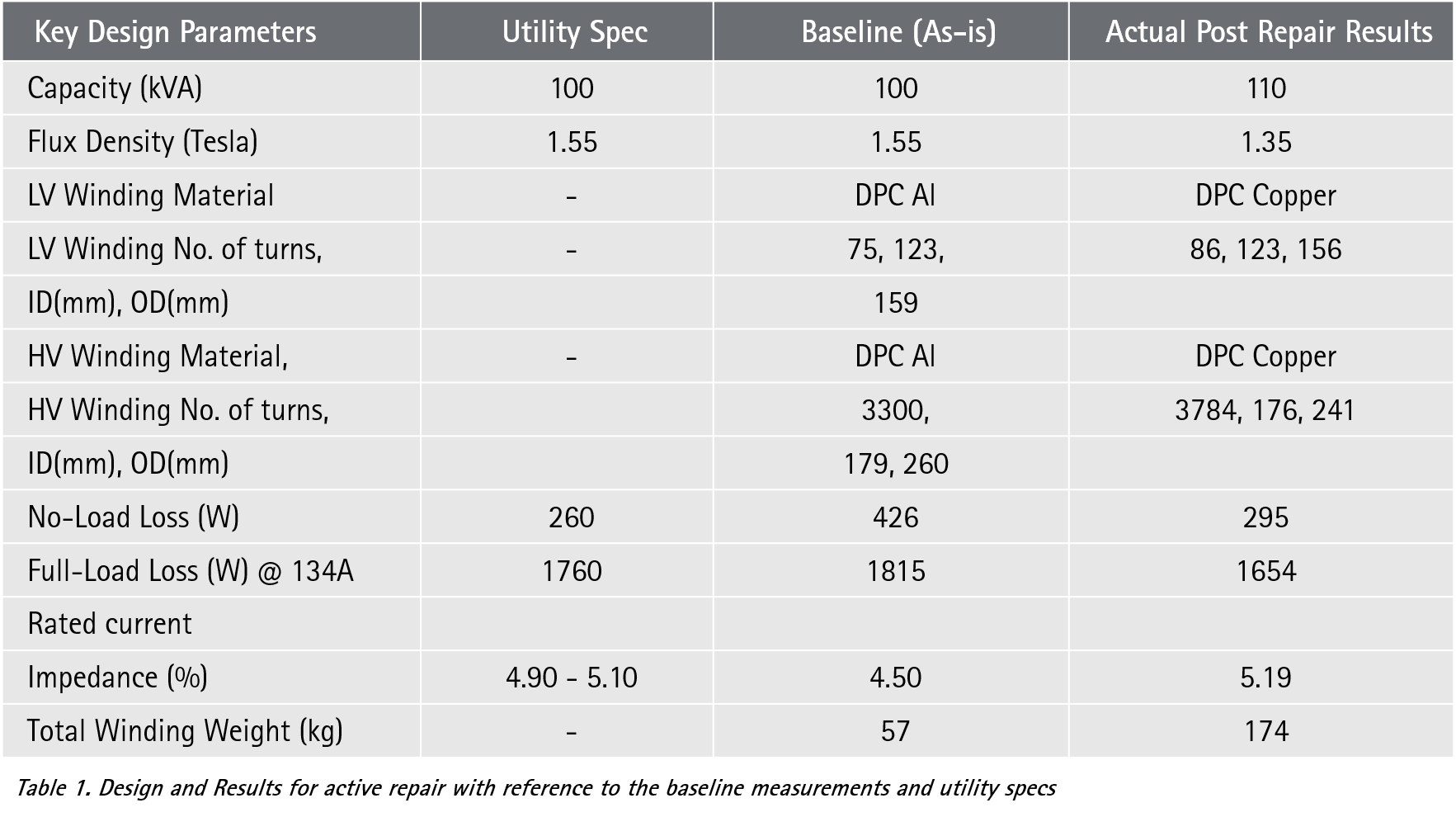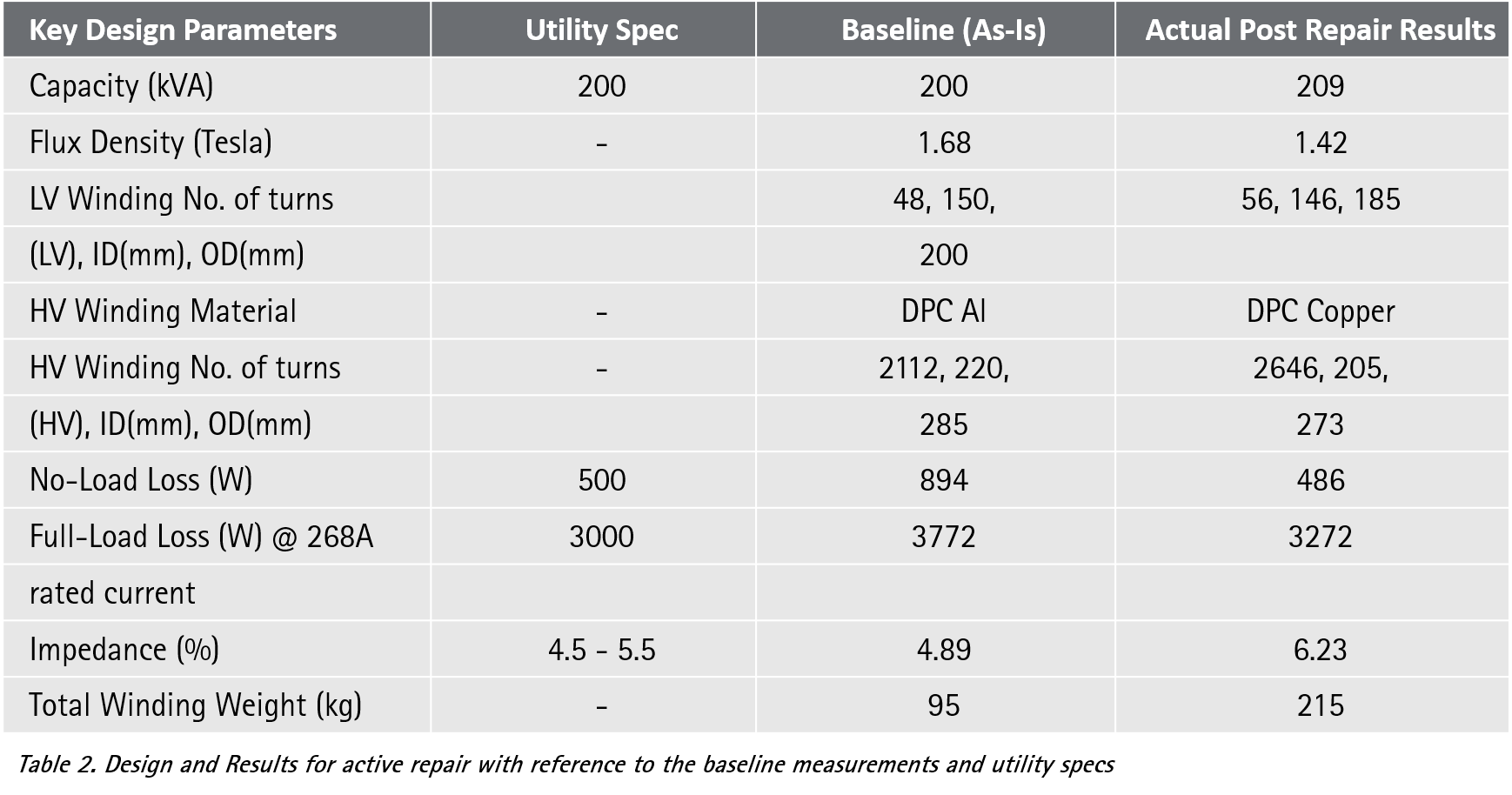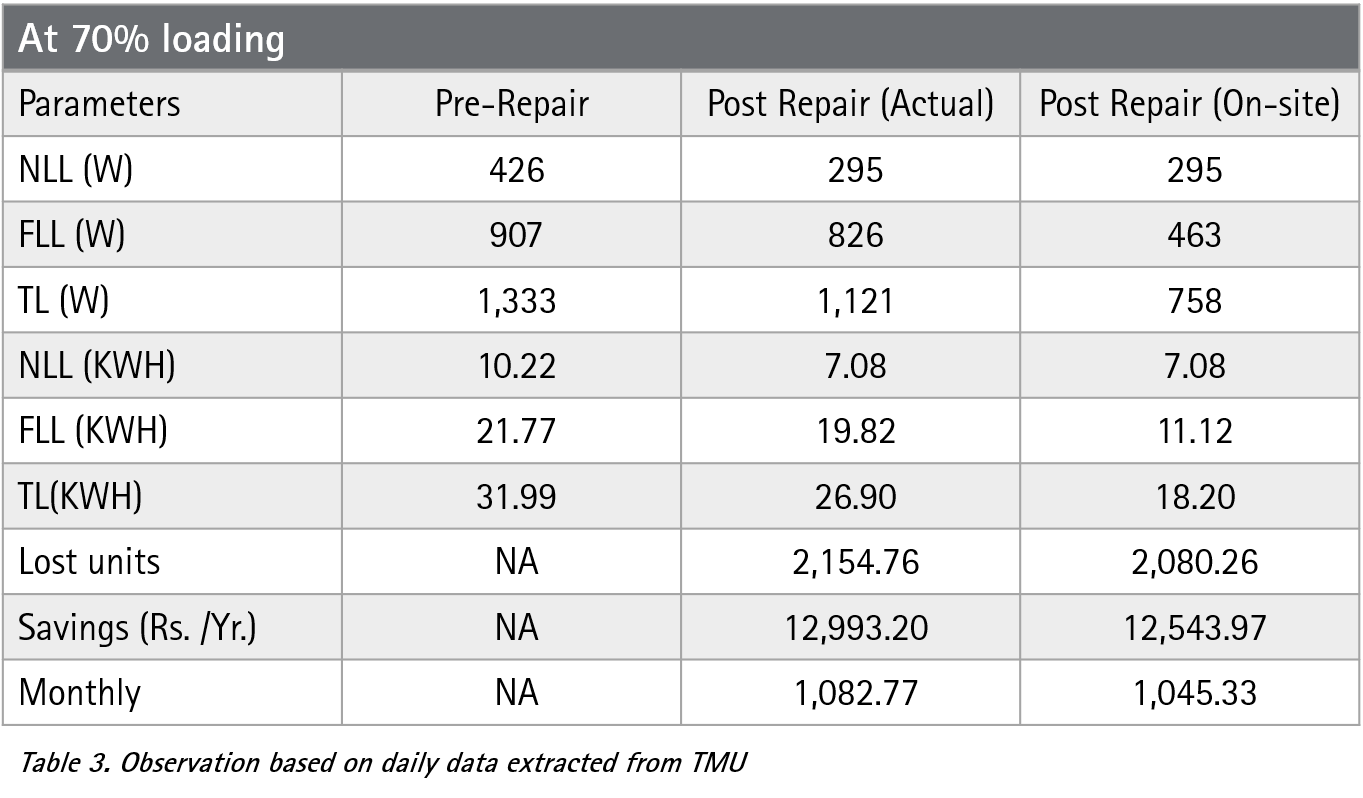Reducing technical losses in distribution transformers: The Proactive Way
Distribution Transformers (DTs) are key assets for any distribution network. Reliable and efficient operations of these high CAPEX assets is important for strong economic health of Indian power distribution companies (DISCOMs). The high monetary value of a transformer has made transformer life-time optimization the focus of asset management. At the same time, paucity of cash with DISCOMs puts constraints in procuring new energy efficient assets unless they are backed by government supported schemes.
Current Scenario
The average Aggregate Technical & Commercial (AT&C) losses of Indian DISCOMs stands at a high level of 22%, consisting of Transmission & Distribution (T&D) losses and commercial loss related to metering, billing, collection etc. Of the technical part, at least 3-4% can be attributed to technical losses with DTs, compared to 0.5% which is the ideal value. Furthermore, the failure rate of DTs in India is in the order of 12-15% (in State Utilities), as against the global average of less than 1%. This makes DTs one of the key intervention areas for DISCOMs to bring down their overall network Technical losses and improve their KPIs.
Reactive vs. Proactive repair
The financial loss to Utilities in terms of repairs and replacement due to failed DTs, is estimated at over INR 8,000 crores each year. Where repair of DTs is concerned, DISCOMs typically, follow a reactive approach, when the DT is repaired only in the event of a breakdown or failure. The repair is also seen as a single activity that largely focuses on bringing the DT back to working condition, with limited emphasis on reducing losses. Further limiting the outcome is the absence of processes towards pre and post repair testing of equipment, resulting in repaired DTs working with loss levels that are well over ideal values. This, in turn results in a high cost of ownership.
It was in this background that International Copper Association India (ICA India) explored the feasibility of reducing technical losses in DTs through a first-of-its-kind concept in the country – ‘Active Repair’.
Active Repair, or ’Performance based repair’, primarily focuses on bringing down technical losses in DTs to near manufacturing specifications and can be carried out on both, failed as well as functional legacy DTs. Depending on the genre, condition and design of the DT, it involves augmentation or replacement of the active materials in a DT- Core, if necessary, and the winding. For instance, using Copper windings in place of Aluminum windings can reduce No-load losses up to 35% and Load-losses by 40%.
ICA India’s objective was to develop a mass replicable, proactive approach to undertaking repairs of DTs in service, with emphasis on reducing technical losses. Towards this end, a pilot project was executed with its Associates, pManifold Business Solutions and High-Rise Transformers, Nagpur.
The Pilot
A step-wise approach was adopted for undertaking active repair on two sample DTs – a 100 kVA failed DT, and a 200 kVA functional DT.
The Results
Case 1: 100 kVA failed DT – After Active Repair, it was observed that No-load loss was reduced to 13% from 65% and Full-load losses to -3% from 13% before active repair.
The Post-repair heat-run test showed that the temperature rise of the winding (45.40C) and the top oil (380C) were within the permissible limits as defined in IS 2026.
As it was a failed DT, kVA capacity was assumed to be its name plate rating of 100 kVA. Based on the post repair temperature rise test, it was observed that the kVA capacity was enhanced by 9%, which allows the DT to take up more load with higher reliability.
Case 2: 200 kVA functional DT – ‘As-Is’ No-load loss and Full-load loss was decreased from 79% and 26% to 2% and 9% respectively.
The Post-repair heat-run test showed that the temperature rise of the winding (49.160C) and the top oil (37.60C) were within the permissible limits as defined in IS 2026.
It was observed that the kVA capacity was enhanced by 5% after the active repair, giving this upgraded DT a full new life cycle similar to an equivalent new DT.
Post Repair Monitoring Post field installation of the active repaired DT, a Transformer Monitoring Unit (TMU) was installed to capture continuous performance of the repaired 100kVA DT. A GPRS modem connected to the energy meters communicates with the server for the transmission of data.
It was observed that post repair under highly loaded condition, the on-site performance of the transformer was efficient and surpassed levels expected during design optimization. Even during summer months when the ambient temperature remained 400C and above, the performance of the Active Repaired DT remained reliable.
Conclusion
Clearly, there is a strong business case for Indian DISCOMs to follow this proactive approach to asset management of key high value assets like DTs. Consider these advantages: The proactive repair approach allows Utilities to undertake improvement in energy efficiency of transformers, as mandated by the Bureau of Energy Efficiency (BEE) in the PAT-2 cycle. From an O&M perspective, Active Repair brings about a substantial reduction in technical losses, thereby saving power procurement costs. In addition, it improves transformer reliability which translates to lesser downtime of the system. Also keeping in mind the other proven benefits of Active Repair, such as raising the kVA capacity of the DT, and increasing asset life, it is clear that Performance Based Repair is the route for better asset management by DISCOMs in India.
Author: Manas Kundu, Director – Energy Solutions, ICA India. This article was featured in the EPR Magazine, August 2021 issue.





